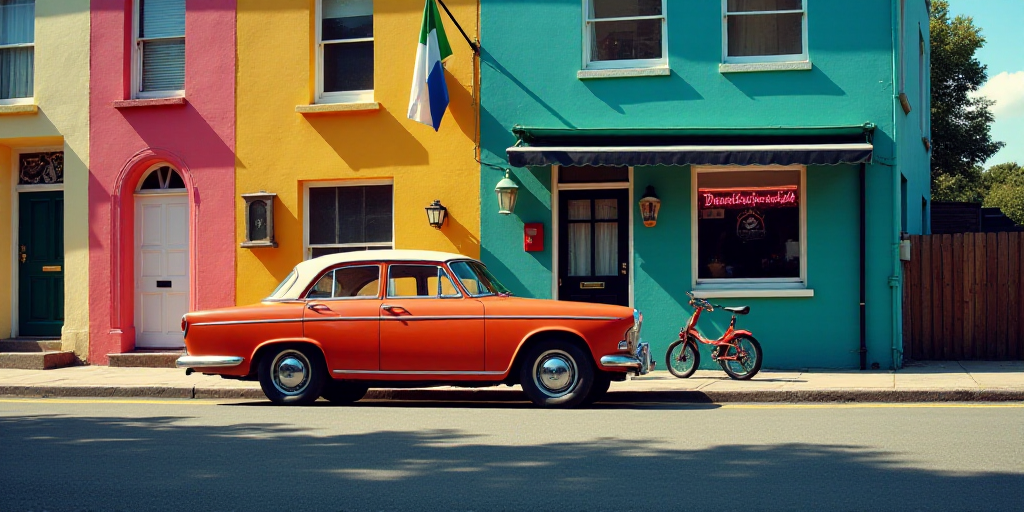Cuba’s Desperate Need for Assistance
Cuba is in dire need of help due to severe shortages of food, fuel, and medicine, along with frequent power outages, a collapsed tourism industry, and renewed U.S. sanctions under Donald Trump’s presidency. The once-thriving sugar mill in Jatibonico now stands idle, lacking essential parts, electricity, and fuel.
Russia’s Fading Role
Two years ago, Russia’s Progress Agro announced plans to import machinery, fertilizers, and technical knowledge to revitalize the Cuban sugar mill. However, these promises have not materialized as Russia grapples with its war in Ukraine and becomes reluctant to lend more money to Cuba.
“Russia’s promises have always been bigger than their results,” said William LeoGrande, a Latin American policy professor at the American University. “If China intensifies its aid in light of Cuba’s desperate conditions, it could be a true lifeline.”
China Steps Up
China has been actively filling the void left by Russia through various timely projects aimed at helping Cuba’s struggling economy. In 2018, Cuba joined China’s Belt and Road Initiative, leading to Chinese investments in strategic infrastructure projects across the island, including transportation, port infrastructure, and telecommunications.
China’s solar park project positions it as a crucial partner for Cuba during this unprecedented crisis. The national grid has collapsed four times in the past year, leaving millions without power and forcing school and business closures.
- Cuba inaugurated a solar park in Cotorro, outside Havana, on February 21. Since then, at least eight more parks have come online, producing nearly 400 MW of solar energy alongside existing parks, roughly one-third of the midday deficit.
- By year’s end, China-funded projects are expected to surpass 1,100 MW, nearly covering the daytime deficit and saving Cuba precious fuel for nighttime use.
- Authorities announced in February that China will participate in a project to modernize Cuba’s entire electricity grid, constructing 55 solar parks by 2025 and another 37 by 2028, totaling 2,000 MW—a massive undertaking that would represent nearly two-thirds of current demand once completed.
The details of agreements between Russia, China, and Cuba remain largely confidential, making it difficult to discern how each country operates in the island nation through private enterprises or public funding, and how Cuba’s government might repay each investment.
China’s Visible Impact
The arrival of Chinese goods is evident across Cuba, with Chinese-branded tractor trailers traversing roads to distant locations like Jatibonico.
Fulton Armstrong, a former National Intelligence Officer for Latin America, called China’s investments a “great benefit,” but warned they wouldn’t be enough to overcome Washington’s renewed sanctions on the island.
“Havana cannot rely on Russia or China to provide magic pills,” Armstrong said. “Only massive Chinese trade and assistance could pull the island through, and that simply doesn’t seem plausible.”
Accusations from the U.S. that China is establishing “spy bases” in Cuba, denied by both Havana and Beijing, coincide with China’s strategic investments in the island.
“Hablar es fácil”
Two years ago, amidst the COVID-19 pandemic and U.S. sanctions, Russia also offered assistance. In May 2023, Russia’s Deputy Prime Minister Dmitry Chernyshenko visited Cuba for a ribbon-cutting ceremony reopening the island’s largest steel mill, made possible by a $100 million Russian investment, according to Cuban state media.
The mill’s director promised a 62,000 metric ton production increase in steel bars for 2024. However, the Russian investment did not translate into production.
Cuba’s statistics agency ONEI reported in April that the island produced only 4,200 metric tons of steel bars in 2024. A recent workday found the mill’s main chimney inactive, with no signs of activity inside.
“Talk is easy. When the plant is running, we hear the noise and see workers, but I haven’t seen any signs of operation,” said Esperanza Pérez, a 37-year-old local resident. “We haven’t seen any benefits here.”
The Cuban government did not respond to a request for comment on the production discrepancy. However, fuel and electricity shortages have affected the industry across the island, halting production.
The following day, Chernyshenko signed at least eight agreements between Cuban state entities and Russian state and private companies, according to a document obtained by Reuters.
- An agreement to ensure Cuba’s wheat supply for bread production
- Opening a well-stocked “Rusmarket” in Havana
- Restoring historical architecture in Havana’s oldest district
- Collaboration on artificial intelligence
There was even a bold plan to reconstruct the dilapidated Tarará beach community, which has been largely off-limits to foreign investment since 1959.
However, a recent visit found most Tarará houses abandoned or in poor condition, with only a few near the beach renovated and no signs of Russian investment.
The plans to open the Rusmarket have been delayed for two years. Nearby Yumurí warehouses, where Russian investors intended to open a larger store stocked with Russian car parts, canned trout, and children’s toys in June or July, appeared largely abandoned.
Reuters could not reach CGC Investments, the Russian company that signed many 2023 agreements. Neither the Russian embassy nor its Ministry of Foreign Affairs responded to a request for comment.
Despite this, Russian state-backed companies have supplied Cuba with wheat and oil shipments via sea, and Moscow, like Beijing, has encouraged tourism on the island, boosting foreign visitor numbers and much-needed hard currency.






